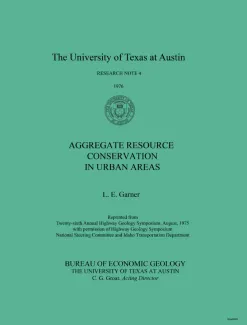Get the Publication
Abstract/Description:
Future utilization of aggregate resources in urban areas must be considered during early planning stages of an urban complex. This is of particular importance because urban land values are commonly greater than the mineral value of these low-unit-value materials, and the use of the land for construction pre-empts exploitation of the aggregate materials. In addition, zoning restrictions may also prohibit resource exploitation of urbanized land. Sequential land use practices that allow the development of resource areas prior to urban encroachment can result in more efficient mineral production and lower consumer costs.
Environmental planning studies in the Austin, Texas area serve as an example of how urban expansion can affect aggregate resource reserves. Sand and gravel and limestone deposits in this area, which were considered reserves a few years ago, are now covered by developments. Furthermore, evaluation of projected aggregate consumption and population trends indicates that substantial quantities of reserves will be lost to future development if current practices prevail. Even though similar materials are present in nearby areas, the unit price will be significantly increased by added transportation costs. A comparison of the possible alternatives indicates that transportation costs would be significantly higher than the cost of rehabilitating land after mineral extraction in local areas.
Many important aggregate resource deposits have been engulfed in the urban development of large cities during the past several years. Zoning regulations that promote resource preservation and sequential land use can extend the productive lives of many such deposits.
